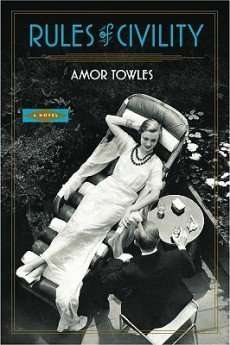The Sense of an Ending, by Julian Barnes, is an eloquent novella about youth seen from the vantage point of late middle age. It examines one's perceptions of events that took place long ago. The narrator, Tony Webster, is an average man who relishes being ordinary. He is now comfortably retired, has an amicable relationship with his ex-wife, and has a grown daughter and grandchildren. Ennui plagues him. At 60, he does nothing other than volunteer at the local hospital library. "I had wanted life not to bother me too much, and succeeded--and how pitiful that was."
But life was not always this way. As a young man in high school, Tony was one of four close friends. The most unusual of these boys was the shy and gifted Adrian Finn. He was a star student and went on to study philosophy and "moral sciences" at Cambridge. Adrian's life ended mysteriously in suicide while he was doing his post-graduate studies. Well into his later years, Tony believes his friend died a noble philosopher's death.
What really happened to Adrian during those university years, as well as to Veronica, the young woman who dated them both, comprises the essence of this book. When Tony is bequeathed Adrian's diary after the death of Veronica's mother, and subsequently denied access to it, the novella takes on a quest motif. Tony follows Veronica, uncovering not only the secrets of her former life, but that of Adrian. Most important, though, he meets his former self--a narcissist whose actions are redeemed only by his sense of current remorse.
You get towards the end of life--no, not life itself, but of something else: the end of any likelihood of change in that life. You are allowed a long moment of pause, time enough to ask the question: what else have I done wrong? (p. 163)
The Sense of an Ending, winner of the 2011 Booker Award, is a powerful novella with surprising twists. It realistically depicts the callousness of youth and the falseness of our recollections. Julian Barnes presents us with a sympathetic but unreliable narrator who leads himself and the reader to a shocking conclusion.
Check Our Catalog
But life was not always this way. As a young man in high school, Tony was one of four close friends. The most unusual of these boys was the shy and gifted Adrian Finn. He was a star student and went on to study philosophy and "moral sciences" at Cambridge. Adrian's life ended mysteriously in suicide while he was doing his post-graduate studies. Well into his later years, Tony believes his friend died a noble philosopher's death.
What really happened to Adrian during those university years, as well as to Veronica, the young woman who dated them both, comprises the essence of this book. When Tony is bequeathed Adrian's diary after the death of Veronica's mother, and subsequently denied access to it, the novella takes on a quest motif. Tony follows Veronica, uncovering not only the secrets of her former life, but that of Adrian. Most important, though, he meets his former self--a narcissist whose actions are redeemed only by his sense of current remorse.
You get towards the end of life--no, not life itself, but of something else: the end of any likelihood of change in that life. You are allowed a long moment of pause, time enough to ask the question: what else have I done wrong? (p. 163)
The Sense of an Ending, winner of the 2011 Booker Award, is a powerful novella with surprising twists. It realistically depicts the callousness of youth and the falseness of our recollections. Julian Barnes presents us with a sympathetic but unreliable narrator who leads himself and the reader to a shocking conclusion.
Check Our Catalog







